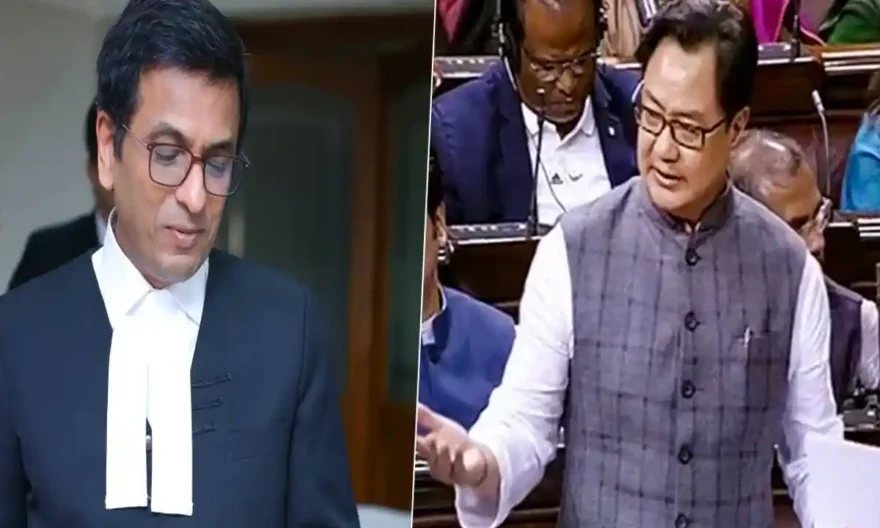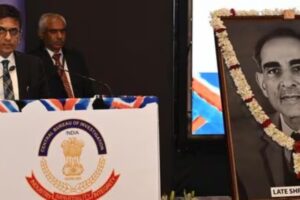
The Supreme Court of India and the Central government are at loggerheads, once again, on the issue of process of appointment of the judges to the higher courts. The issue came to light when the Union Minister of Law Kiren Rijiju questioned the collegium system as being non-transparent. He further linked the pendency of cases to the current system of appointment, that is, the colle- gium system. The stance of the Law Minister was further reaf- firmed by the Vice President and Chairman of the Rajya Sabha Jagdeep Dhankar, who went on to criticize the striking down of the National Judicial Appoint- ments Commission (NJAC) in its decision in 2015. Article 124 and 217 of the Constitution of India deal with the appointment of the judges of the higher courts.
How are judges of the higher courts appointed by the current Collegium system?
The current Collegium com- prises the fiver senior-most judges of the Supreme Court, that is, the Chief Justice of India along with the four senior-most judges of the Supreme Court. It is primarily tasked to decide on the elevation or appointment
of judges to the Supreme Court and the transfers of judges of the High Courts.
The Collegium, in order to enforce the elevation or ap- pointment or transfer of judges, sends its recommendations of the names of the lawyers or the judges to the Central Gov- ernment. The Central Govern- ment, in turn, is also entitled to propose names of lawyers or judges to the Collegium for consideration. If the Collegium resends any of the names for ap- pointment, the government is bound to act upon the proposed names. However, there exists no time limit to reply and hence, the appointment or transfer of the judges may take long time. For an instance, the appointment of Justice K.M. Joseph was stuck when the Collegium had recom- mended his name for being ele- vated to the Supreme Court from the High Court of Uttarakhand but the Central Government did not, for long, give its assent for his elevation.
In case of appointment of judg- es to the High Courts, the Chief Justices of the High Courts make a proposal of meritorious con- tenders to be sent to the Supreme Court Collegium. The appoint- ments finalized by the Supreme Court Collegium is then sent to the President for his approval.
The three-judges case that es- tablished the Collegium system
The Collegium does not find any mention in the Constitution of India. It was established over the course of three landmark cases, collectively known as the Three Judges case.
In the case of Union of India v. S.P. Gupta and Ors in 1981, also
known as the First Judges case, a seven-judge bench of the Su- preme Court dealt with the in- terpretation of Article 124(2) of the Indian Constitution. In the decision, the court held that the central government had all the powers to decide on whether to appoint or transfer a judge or not. The court observed that in the process of appointing a judge to the Supreme Court, the Chief Justice of India is to be consulted. However, that does not mean that the government has to be bound by the opinion of the
Chief Justice. The ultimate power of appointing a judge remained with the central government. The court stressed upon the use of the word ‘may’ in Article 124 and stated that it only made it optional for the government to decide on which of the judges it should consult. However, it did not make it optional on wheth- er to consult the judges or not. Hence, the Central government, in accordance with the judge- ment of the First Judges case, must consult the existing judges of the Supreme Court but the ul-
timate powers to decide should vest with the central government. The Supreme Court Advo- cates on Record Association v.
Union of India in 1993 sought to overturn the First Judges case. The primacy of the executive over the judiciary was already proven to be disastrous dur- ing the emergency when two senior-most judges of the Su- preme Court were superseded by a junior judge for the post of the Chief Justice of India. In this case, the apex court ruled that the CJI should propose and ap-
point judges to the higher courts of the Indian judiciary and that there should be a Collegium consisting of the CJI and the two senior-most judges for deciding on these proposals. The court stated that the CJI must consult the members of the Collegium in order to finalize the proposals. The Collegium, after finalizing on the proposals for appoint- ment and transfers, would then send the names to the President for his consent. This case was decided by a nine-judge bench with a 7:2 majority. However, subsequent to setting up of the Collegium system, the judiciary did not seem to be working in consonance with each other as there were instances of CJI not accepting recommendations of the members of the Collegium. This meant that the Second Judges case rather upheld the supremacy of the CJI and not the judiciary in general.
In the Third Judges Case, that is, In Re Special Reference case, the advisory opinion of the Su- preme Court was sought under
Article 143. The government did not call into question the valid- ity of the Collegium system in this case nor did it challenge the judgement of the Second Judges case. The only significant change that was brought up in the case was with regards to the number of members in the Collegium. The number of members in the Collegium was now increased to five, that is, the CJI along with four senior-most judges of the Supreme Court.
National Judicial Appointments Commission (NJAC)
The NJAC, brought up by the 99th Constitutional Amendment,
allowed the President to appoint the judges of the Supreme Court on advice of the Central Govern- ment. The case of Association of India v. Supreme Court Advocates on Records Association declared it unconstitutional with the reason- ing that the independence of the judiciary was being sabotaged by allowing the executive to act upon the appointment of the judges of the higher judiciary.
Contentions against the Colle- gium System
The executive and the critics of the Collegium system argue that the appointment of judges by the judges favors partiality on part of the judiciary. The Law Commis- sion, in 2009, stated that nepotism and personal preferences existed in the working of the Collegium system. The executive alleges it to be opaque.
While it did not specifically deal with the Collegium system, the case of Central Public Informa- tion Officer, Supreme Court of In- dia v. Subhash Chandra Agrawal held that the offices of the CJI and the judges of the Supreme Court were public authorities and were answerable under the Right to In- formation Act.
Conclusion
While there remains a prevailing contention between the judiciary and the executive for the appoint- ment or transfer of the judges to the higher courts, a solution has to be reached without jeopardiz- ing the powers of any of the two. Neither the Collegium nor the executive shall have a say above each other and the boundaries set out in Article 50 of the Indian Constitution, which deals with the separation of the judiciary from the executive, need to be respected.




